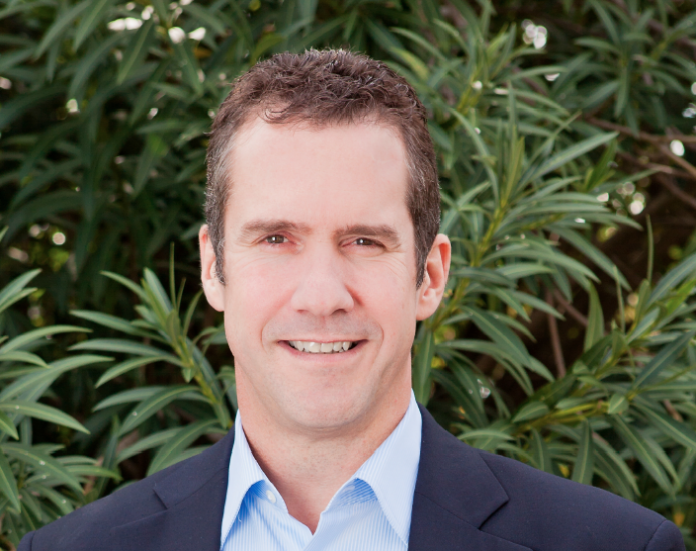The big boss of Sanford, one of New Zealand’s major producers of king salmon talks risks, opportunities and open ocean aquaculture.
Volker Kuntzsch is a man who knows a thing or two about the sea. Before joining Sanford, he was President of Nippon Suisan (USA), President and CEO of King and Prince Seafood Corp in Brunswick, Georgia, USA. Former industry appointments include Global Marketing Director for Nippon Suisan Kaisha, Tokyo, Managing Director of Hangana Seafood, Namibia, as well as senior roles with Unilever Europe in Germany and the United Kingdom.
He’s been leading New Zealand’s oldest publicly listed company – which has commercial fishing and aquaculture operations – for six years.

New Zealand
While New Zealand has unspoiled, cool waters, it’s becoming more and more clear that climate change is having an impact, with increased risks of heat stress on fish farms.
Is the company looking to farm salmon further out to sea?
“Open ocean aquaculture is a fascinating area and we are watching developments with interest. We are approaching this area with informed caution and are making a small start ourselves with a project off the Canterbury coast with Greenshell mussels. Our first trial gave us a good picture of the natural challenges we will face when farming further from the coast and we have learned a lot,” wrote Kuntzsch in an email.
In terms of growth, many salmon farmers in New Zealand say that they are looking at the Norway model for ‘what could be’ in salmon aquaculture. “Our industry will have to deal with the risks created by climate change. How we tackle this challenge will determine the kind of future we have. We are extremely proud of the salmon we grow in Big Glory Bay in Stewart Island and being in such far-flung southern latitudes gives us a measure of protection against the impact of climate change,” wrote Kuntzsch.
Though he is also conscious of the risks. An algal bloom and elevated water temperatures in Big Glory Bay, Stewart Island, resulted in slower than expected growth of its king salmon biomass. 2019’s EBITDA (six months ended 31 March 2019) was EUR 25.4 million compared to 26.9 million in the same period in 2018. The company harvested 3,498 tonnes of salmon (greenweight) in 2018.
Warmer waters
“However we still face warmer waters and the risk of more frequent algal blooms. Fortunately, we have a dedicated team who have watched and learned from the best of the rest of the world’s experience in salmon farming, and they have put in place a number of measures which are helping us to mitigate the impacts and keep our salmon thriving in this beautiful environment,” he wrote.
Sanford announced that it is investing more than USD 68 million over the next two years to safeguard against the impact of climate change.
What specifically is being spent to support the company’s salmon farming operations? Such as net cleaning tech, oxygenation systems etc?
“We have already installed new net cleaning technology in our salmon pens and have been very pleased with how this is working. We recently received approval to increase the number of fish we can farm in the Bay in a careful and sustainable way over the next few years. This means new pens and a new barge along with other improvements. We are able to do this without increasing the total footprint of our farm,” wrote Kuntzsch.

In June, SalmonBusiness reported Sanford was restructuring its fish processing operations, creating three centres across the South Island shifting from white fish on certain sites to more premium salmon production.
Boost our output
“We saw the need to focus our South Island sites on their respective areas of speciality,” explained Kuntzsch. “For example, Havelock is where we have focused on mussel processing, close to the source of much of our supply. Timaru, where our deepwater fleet is based, is where our white fish processing is focused and Bluff, in the deep south, takes care of the premium salmon farmed across the Strait in Stewart Island. A number of factors drove the decision, to concentrate white fish production almost entirely in Timaru, but in the end, it was only logical to enable each of these sites to focus on what they do best and become centres of excellence. Sadly this did mean some job losses in Bluff (around 18 of the approximately 100 staff there) and we recently said a fond farewell to those who are moving on to new opportunities. However, our long term plan for Bluff is very much one of growth as we carefully and sustainably boost our output from the Big Glory Bay salmon farm”.
Could you tell us more about Sanford’s Big Glory Bay brand in Australian and US markets – as well as Hong Kong- and if there are any new markets to be tapped into on the horizon?
“These markets are still in the early phases of growth for our BGB product but the reception has been incredible. World-class chefs are giving us wonderful feedback about our beautiful New Zealand salmon, calling out the mouth feel, the freshness and the optimum levels of oils. When we show them photographs from the location and tell them the story of the origins of our Big Glory Bay product, this always seals the deal.”

